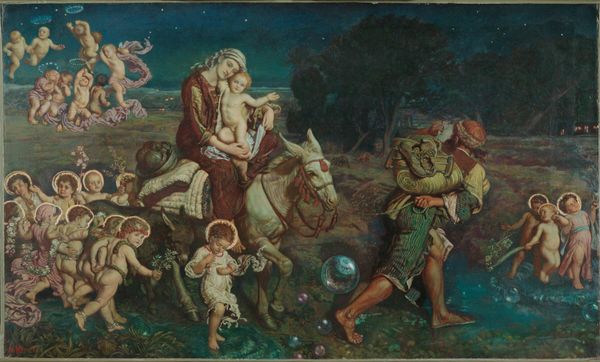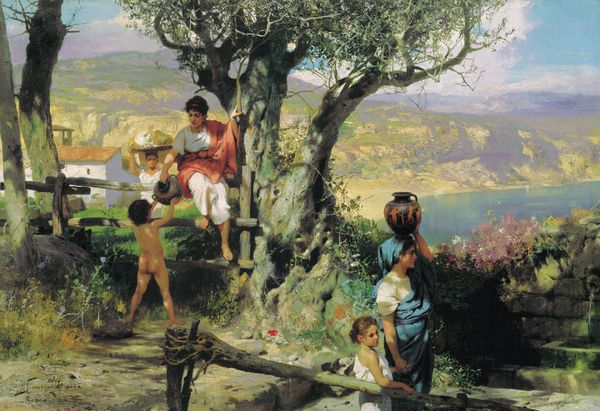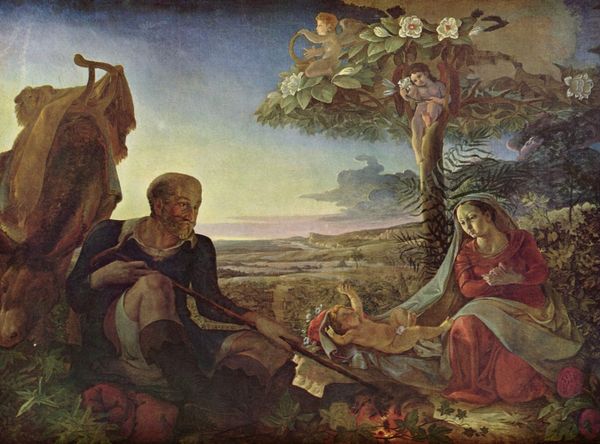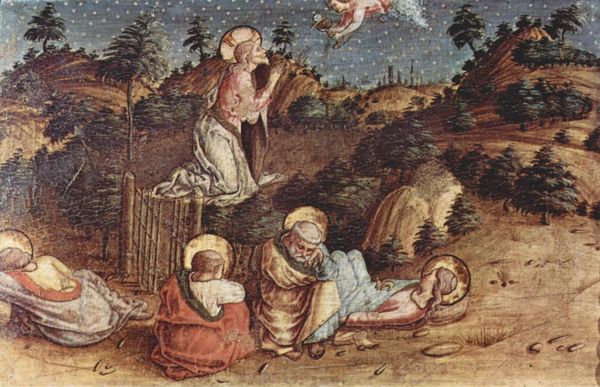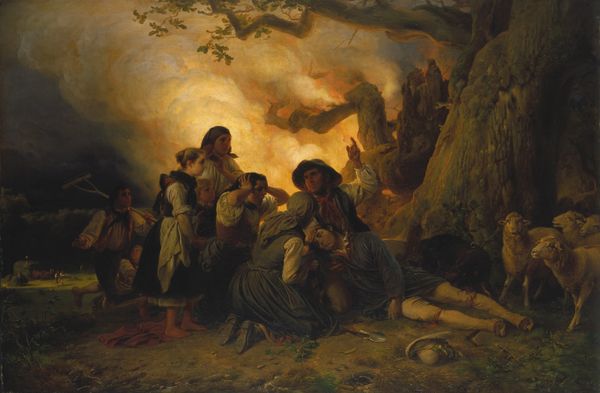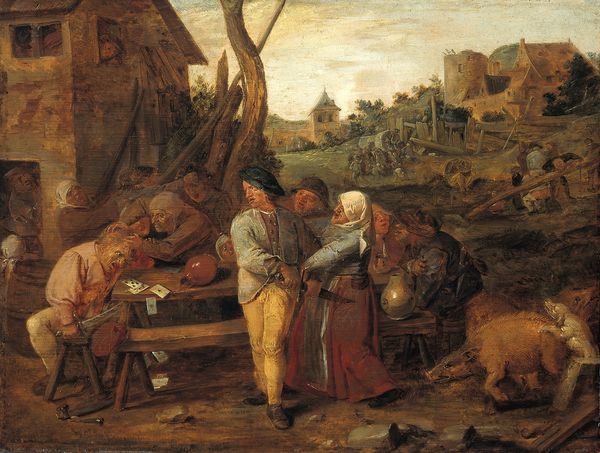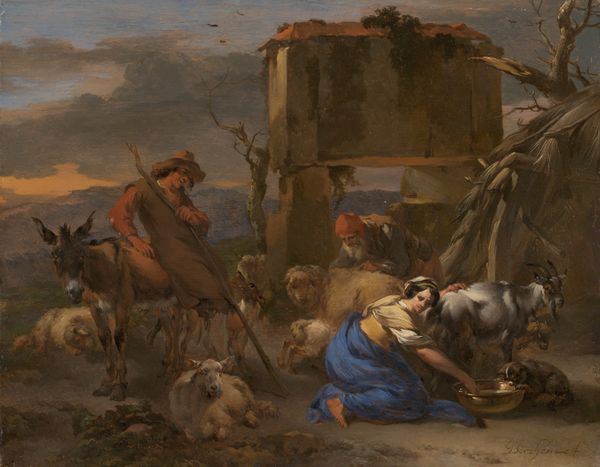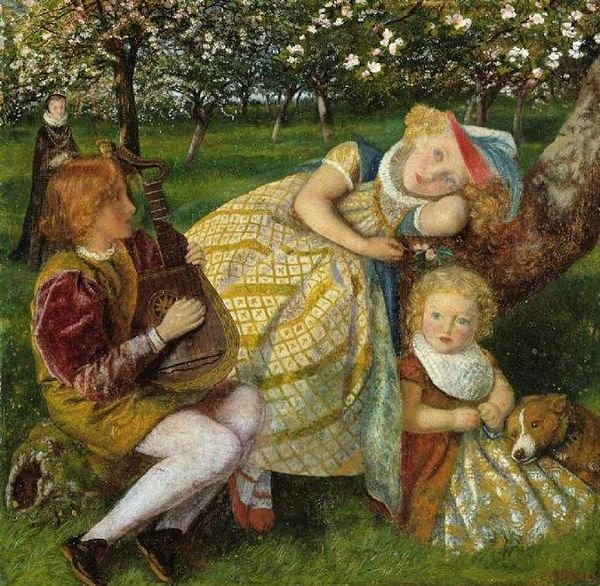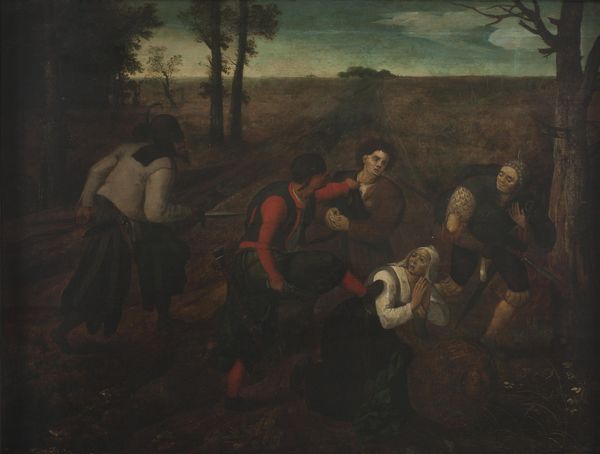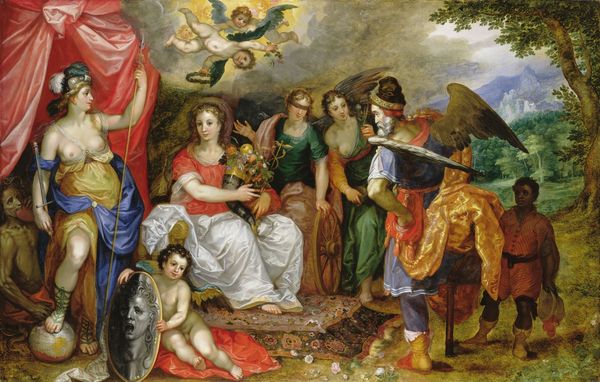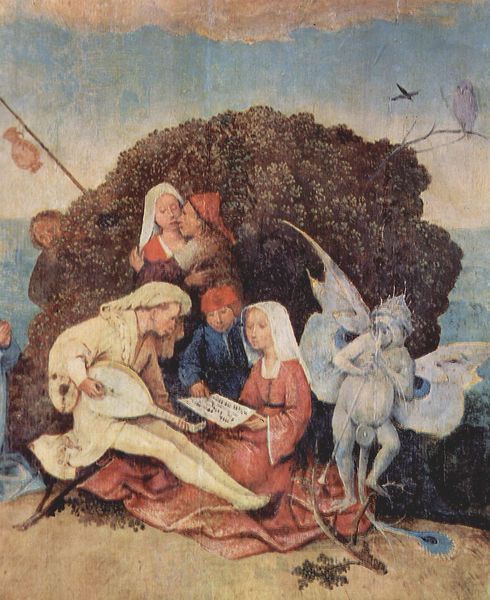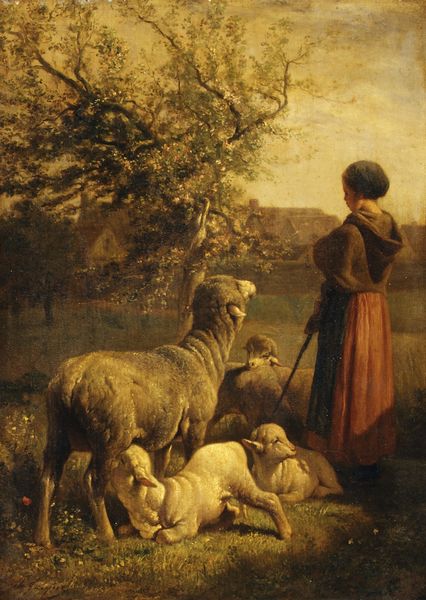
painting, oil-paint
#
narrative-art
#
painting
#
oil-paint
#
landscape
#
figuration
#
mythology
#
painting painterly
#
symbolism
#
painting art
#
history-painting
#
pre-raphaelites
#
angel
Dimensions: 247.7 x 157.5 cm
Copyright: Public domain
Curator: Let's turn our attention to "The Triumph of the Innocents" by William Holman Hunt, completed in 1876. It's a powerful oil painting currently housed at the Walker Art Gallery in Liverpool. Editor: What strikes me immediately is the sheer density of figures against that dramatically lit landscape. It evokes a feeling of precarious movement, almost a panicked flight, underscored by those luminous orbs scattered along the ground. Curator: Precisely. Note how Hunt uses light not just to illuminate but also to direct the viewer's gaze. The painting stages the flight of the Holy Family into Egypt, infusing the scene with multiple layers of symbolic narrative. Mary, carrying the infant Jesus on a donkey, is surrounded by the souls of infants murdered by Herod. Editor: Right, Hunt situates this biblical episode within the broader context of systemic violence against vulnerable populations. We must recall the impact of British Imperialism. By rendering these child figures as distinctly ethereal, yet tangibly present, he highlights their interrupted potential and innocence lost to imperial forces. It feels like a pointed political commentary, wouldn't you say? Curator: Undeniably, there's a symbolic layering at work here, as Pre-Raphaelite painting is wont to do. Focus for a moment on the orb shapes - a technical marvel the way Hunt applies light through this motif of reflective soap bubbles. And there's the precision with which each of the infant's gestures is rendered; the figures are almost photographic in detail. The structure offers itself through detailed observation. Editor: But the 'triumph' is bitterly ironic. These are not victors; they are victims. Look at the angels on the left and the figures with small crossbows in the painting, these small spirits cannot fight the injustice alone, and we, the audience, are challenged to become active witnesses. By portraying this procession, the painting raises uncomfortable questions about responsibility and justice for the marginalized. This feels profoundly pertinent within the history of British Colonial power. Curator: It seems our divergent analyses actually find common ground. The artist does provoke these social tensions; the formal design holds so much complexity with multiple levels of allegorical interpretation. Editor: Exactly. Holman Hunt challenges us to consider how these biblical narratives speak to our own troubled times. His Triumph resonates not as a celebration, but as an awakening of conscience.
Comments
No comments
Be the first to comment and join the conversation on the ultimate creative platform.
